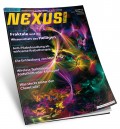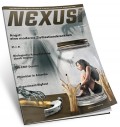Elektromagnetische Strahlung von Handys, Sendemasten, elektrischen Geräten und der neuen drahtlosen Technologie beeinträchtigt unsere Gesundheit, indem hormonelle und andere körperliche Vorgänge gestört werden, und zwar manchmal so stark, dass eine Krebserkrankung ausgelöst werden kann.
 Druckansicht
Druckansicht
Endnoten
- Dibirdik, I.; Krustupaitis, D.; Kurosaki, T.; Tuel-Ahlgren, L.; Chu, A.; Pond, D.; Tuong, D.; Luben, R. und Uckun, F. M.: „Stimulation of Src Family Protein-tyrosine Kinases as a Proximal and Mandatory Step for SYK Kinase-dependent Phospholipase Cy2 Activation in Lymphoma B Cells Exposed to Low Energy Electromagnetic Fields“ in J Biol Chem, 13.02.1998, 273(7): S. 4035-9
- Dibirdik, I.; Krustupaitis, D.; Kurosaki, T.; Tuel-Ahlgren, L.; Chu, A.; Pond, D.; Tuong, D.; Luben, R. und Uckun, F. M.: „Electromagnetic Field-induced Stimulation of Bruton’s Tyrosine Kinase“ in J Biol Chem, 15.05.1998, 273(20): S. 12397-401
- Shaw, G. M. und Croen, L.A.: „Human adverse reproductive outcomes and electromagnetic field exposures: review of epidemiologic studies“ in Environmental Health Perspectives, Dezember 1993; 101 (Beilage 4): S. 107-19
- Blaasaas, K. G.; Tynes, T. und Lie, R. T.: „Residence near power lines and risk of birth defects“ in Epidemiology, 2003, 14: S. 95-8
- Ahlbom, A.; Cardis, E.; Green, A.; Linet, M.; Savitz, D. und Swerdlow, A. (ICNIRP [International Commission for Non-Ionizing Radiation Protection] Standing Committee on Epidemiology): „Review of the Epidemiologic Literature on EMR and Health“ in Environ Health Perspectives, Dezember 2001, 109 (Beilage 6): S. 911-33
- Lyskov,E.; Juutilainen, J.; Jousmäki, V.; Hänninen, O.; Medvedev, S. und Partanen, J.: „ Influence of short-term exposure of magnetic field on the bioelectrical processes of the brain and performance“ in Int J Psychophysiol, 1993; 14: S. 227-31
- Kavet, R.: „Contact current hypothesis: Summary of results to date“ in Bioelectromagnetics, 2005; 26 (Beilage 7): S. 75-85
- Graham, C.; Cook, M. R.; Gerkovich, M. M. und Sastre, A.: „Examination of the melatonin hypothesis in women exposed at night to EMR or bright light“ in Environ Health Perspectives, Mai 2001; 109(5): S. 501-7
- Havaas, M. und Stetzer, D.: „Electromagnetic hypersensitivity: biological effects of dirty electricity with emphasis on diabetes and multiple sclerosis“ in Electromag Biol Med, 2006; 25(4): S. 259-68
- Salford, L. G.; Brun, A. E.; Eberhardt, J. L.; Malmgren, L. und Persson, B. R. R.: „Nerve cell damage in mammalian brain after exposure to mircrowaves from GSM mobile phones“ in Environ Health Perspect, Juni 2003; 111(7): S. 881-3
- Savitz, D. A.; Checkoway, H. und Loomis, D. P.: „Magnetic field exposure and neurodegenerative disease mortality among electric utility workers“ in Epidemiology, 1998; 9: S. 398-404
- Becker, Robert O.: Cross Currents: The Promise of Electromedicine, the Perils of Electropollution. Jeremy P. Tarcher, New York, 1. Auflage Dezember 1989
- Interview mit Dr. Robert O. Becker von Linda Moulton Howe, London, 14.05.2000, zu finden unter www.energyfields.org/science/becker.html
- Sienkiewicz, Z. J.; Saunders, R. D. und Kowalczuk, C. I.: „Biological Effects of Exposure to Non-ionizing Electromagnetic Fields and Radiation. II. Extremely Low Frequency Electrical and Magnetical Fields“, NRPB Report R239, 1991, National Radiological Protection Board, Chilton, Großbritannien.
- Sienkiewicz, Z. J.; Saunders, R. D. und Kowalczuk, C. I.: „Biological Effects of Exposure to Non-ionizing Electromagnetic Fields and Radiation. III. Radiofrequency and Microwave Radiation“, NRPB Report R240, 1991, National Radiological Protection Board, Chilton, Großbritannien.
- Becker, R. O. und Marino, A. A.: „Effects of Electromagnetic Energy on the Nervous System“, Zusammenfassung von Kapitel 5 in: Electromagnetism & Life. State University of New York Press, Albany, 1982, auch unter www.ortho.lsuhsc.edu/Faculty/Marino/EL/EL5/Summary5.html
- Paneth, N.: „Neurobehavioral effects of power-frequency electromagnetic fields“ in Environ Health Perspectives, Dezember 1993, 101(S4): S. 101-6
- Srinivasan, V.; Spence, D. W. et al.: „Melatonin, environmental light, and breast cancer“ in Breast Cancer Res Treat, 31.05.2007, PMID: 17541739
- Robien, K.; Cutler, G. und Lazovich, D.: „Vitamin D intake and breast cancer risk in postmenopausal women: the Iowa Women’s Health Study“ in Cancer Causes Control, Sept. 2007, 18(7): S. 775-82, elektr. Veröffentl. 05.06.2007, PMID: 17549593
- Masami, I.; Nitta, H. und Kabuto, M.: „Magnetic fields (MF) of 50 Hz at 1.2 µT as well as 100 µT cause uncoupling of inhibitory pathways of adenylyl cyclase mediated by Melatonin 1a receptor in MF-sensitive MCF-7 cells“ in Carcinogenesis, Juli 2001, 22(7): S. 1043-8
- „When Enough is Never Enough: A Reproducible EMF Effect at 12 mG“ in Microwave News, 23.11.2005, www.microwavenews.com/nc_nov2005.html
- Coogan, P. F.; Clapp, R. W.; Newcomb, P. A.; Wenzl, T. B.; Greg Bogdan, G.; Mittendorf, R.; Baron, J. A. und Longnecker, M. P.: „Occupational Exposure to 60-Hertz Magnetic Fields and Risk of Breast Cancer in Women“ in Epidemiology, September 1996; 7(5): S. 459-64
- Demers, P. A.; Thomas, D. B.; Rosenblatt, K. A. et al.: „Occupational Exposure to Electromagnetic Fields and Breast Cancer in Men“ in Am J Epidemiology, 1991, 134(4): S. 340-7
- Graham, C. et al.: „Examination of the melatonin …“ in Environ Health Perspectives, op.cit.
- Charles, L. E.; Loomis, D. et al.: „Electromagnetic fields, polychlorinated biphenyls, and prostate cancer mortality in electric utility workers“ in Am J Epidemiology, 15.04.2003, 157(8): S. 683-91
- Harland, J. D.; Lee, M. Y.; Levine, G. A. und Lidburdy, R. P.: „Differential Inhibition of Tamoxifen’s Oncostatic Functions in a Breast Cancer Cell Line by 12 mG Magnetic Field“ in: Electricity and Magnetism in Biology and Medicine. Bersani, F. (Hrsg.), Plenum Press, Bologna, Italien, 1998
- Girgert, R.; Schimming, H.; Körner, W.; Gründker, C. und Hanf, V.: „Induction of tamoxifen resistance in breast cancer cells by ELF electromagnetic fields“ in Biochemical and Biophysical Research Communication, 04.11.2005; 336(4): S. 1144-9
- Becker, Robert O.: „Cross Currents: The Promise of Electromedicine, the Perils of Electropollution“, op.cit., S. 208
- „Serotonin, Suicidal Behaviour and Impulsivity“ in The Lancet, 24.10.1987, S. 949-50
- Becker, Robert O.: „Cross Currents …“, op.cit.
- Perry, F. S. et al.: „Environmental Power Frequency Magnetic Fields and Suicide“ in Health Physics, 1981, 41: S. 267-77; Perry, F. S. und Pearl, L.: „Health effects of ELF fields and illness in multi-storey blocks“ in Public Health, Januar 1988, 102(1): S. 11-8
- „Serotonin …“ in The Lancet, op.cit.
- Blake Levitt, B.: Electromagnetic Fields: A Consumer’s Guide to the Issues and How to Protect Ourselves. Harcourt Brace & Company, Orlando, Florida, 1995, S. 133
- Becker, Robert O.: „Cross Currents …“, op.cit.
- Hillman,D.: „Exposure to Electric and Magnetic Fields (EMR) Linked to Neuro-Endocrine Stress Syndrome: Increased Cardiovascular Disease, Diabetes, & Cancer“ in Shocking News, Nr. 8, November 2005
- Carlo, George und Schram, Martin: Cell Phones: Invisible Hazards in the Wireless Age – An Insider’s Alarming Discoveries About Cancer and Genetic Damage. Carroll & Graf, 2001, reprint edition, 09.02.2002, S. 217
- Mitschrift von Dr. George Carlos Treffen mit dem Scrutiny Panel, Telephone Mast Review, States of New Jersey, Großbritannien, 26.02.2007, www.jerseymastconcern.co.uk/drcarlotranscript.html
- Lai, H. und Singh, P.: „Magnetic-Field-Induced DNA Strand Breaks in Brain Cells of the Rat“ in Environ Health Perspectives, Mai 2004; 112(6): S. 687-94
- Agarwal, A. (Leiter des Clinical Andrology Laboratory and Reproductive Bank; Forschungsdirektor im Reproductive Research Center, The Cleveland Clinic): „Relationship between Cell Phone Use and Human Fertility: An Observational Study“, Vortrag P-398, 23.10.2006, beim 62. Jahrestreffen der American Society for Reproductive Medicine (ASRM), New Orleans, 21.-25.10.2006
- Henderson, M.: „Mobiles may decrease men’s fertility“, 23.10.2006, www.timesonline.co.uk/tol/news/world/article610494.ece
- Carlo / Schram: Cell Phones …, op.cit., S. 246
- Ungar, J.; McGregor, S.; Rahman, M.; Taylor, D.; Torres, N. und Hanser, A.: „Energy Resonance Technology (ERT): A Targeted Intervention For Electro-Magnetic Radiation (EMR) Induced Biological Effects“ in International Journal of Clinical Bioenergetics, 2007, Bioenergetics Institute, www.bioenergeticsinstitute.com/Portals/0/Documents/Ungar2006ERTintervEMRbioeffectupdateCorrected.pdf
- Fernsehinterview mit Dr. George Carlo in London, RTE News, Dublin, Irland, 22.02.2007, www.rte.ie/news/2007/0222/primetime_av.html?2222251,null,230, Bericht in Omega News, 23.02.2007, http://omega.twoday.net/20070223
- www.health-concerns.org
- www.safewireless.org
- Telefoninterview mit Dr. George Carlo, 05.06.2007


 Dr. Sherrill Sellman ist Ärztin für Naturheilkunde und Psychotherapeutin. Als Autorin mehrerer Bücher hält sie Vorträge und ist Gast in diversen Radiosendungen. Zusätzlich arbeitet sie als anerkannte Sicherheitsberaterin im Bereich elektromagnetische Strahlung.
Dr. Sherrill Sellman ist Ärztin für Naturheilkunde und Psychotherapeutin. Als Autorin mehrerer Bücher hält sie Vorträge und ist Gast in diversen Radiosendungen. Zusätzlich arbeitet sie als anerkannte Sicherheitsberaterin im Bereich elektromagnetische Strahlung.
Kommentare
22. Juni 2009, 01:34 Uhr, permalink
C.D.
Hallo,
Ich bin grundsätzlich der Meinung das Elektrosmog schädlich sein kann. Trotzdem muss ich hier Fragen stellen, die sich eventuell gegen die Aussagen im Text und den Autor richten.
Etwas Mühe habe ich folgende Aussagen und deren Zusammenhang zu verstehen:
[...] kann starke Lichteinwirkung auf die Augen während der Nacht [...]
[...] Künstliches Licht während des Schlafs wirkt sich dabei viel negativer aus als natürliches [...]
- Woher soll starke Lichteinwirkung während der Nächt herkommen?
- Natürliches Licht, insbesondere das Tageslicht ist um Potenzen stärker bzw. heller als Kunstlicht - den Fall ausgenommen, dass man die unmittelbare Nähe einer Hochleistungstageslichtquelle meint
[...] oder im Haushalt defekte Leitungen liegen hat, ist ständiger elektromagnetischer Strahlung ausgesetzt [...]
Was für defekte Leitungen sind da gemeint?
- Eine defekte Leitung leitet entweder keinen Strom und dann entstehen so gut wie keine Magnetfelder (Potentialfelder ausgenommen)
- Oder eine defekte Leitung führt zu einem Kurzschluss und in der Regel zu einem Auslösen der Sicherung oder Durchbrennen der Leitung, was wiederum zu einer Unterbrechung des Stromflusses und der Reduzierung des Magnetfeldes führt.
MfG
CD
13. November 2016, 13:05 Uhr, permalink
Simon
Hallo,
ich bin auch der festen Überzeugung, jedoch es wäre schön, wenn der Author Stellung zu den Fragen von C.D. nehmen könnte.
12. Februar 2019, 19:38 Uhr, permalink
Lydia Thiessen
Klasse Artikel, danke! Ich bemerke die Auswirkungen der Elektronik. Kleine Auswahl: Dect-Telefone spüre ich durch ein schmerzhaftes Ziehen am Herz, als ob ein Gewicht dran hängt. Wlan fegt mich nachts aus dem Bett, an Weiterschlafen nicht zu denken. Handys kochen einem die Birne weich. Internet saugt einem die Seele raus. All die immer komplizierter werdende Software klaut einem den letzten Rest an Zeit und Energie. Man wird komplett mürbe und die Nerven gehen kaputt. Das ist leider kein Witz, und deshalb möchte ich aussteigen, solange es noch geht, weil ich von dem einfach nur tödlichen Elektronikmüll die Schnauze voll habe. Gesundheit geht vor.
12. Februar 2019, 19:52 Uhr, permalink
Lydia Thiessen
Ich nehme an, der Grund, warum Kunstlicht im Gegensatz zu natürlichem Licht (von Sonne, Glühkäfern, Tiefseefischen etc.) so schädlich ist, ist der: Das Kunstlicht kommt aus Metallen und aus Kunststoff (Erdöl). Metalle sind die Nerven und das Gehirn der Erde. Erdöl sind die verwesten Reste von Lebewesen (Saurier u.v.a. Tiere, Pflanzen, auch Menschen). Wenn man Metalle ausbeutet, verletzt man die Erde. Wenn man Erdöl aus der Erde holt, verletzt man auch die Erde und stört dazu die Totenruhe früherer Lebewesen (Leichenschändung...). Erdöl und Metalle werden der Erde bei lebendigem Leib rausgerissen. Man stelle sich vor, jemand reißt uns die Nerven raus, dann kann man sich vorstellen man, wie das der Erde schmerzt. Die Erde ist ein Lebewesen, ihre Sprache hat eine Frequenz von 8 Hertz (Schumann-Wellen). Daher liegt auf der Elektrik und Elektronik, egal, ob sie als Licht, Wlan, defekte oder tote Leitung (eben, das ist genau das Metall, was der Erde fehlt!) oder sonstwas kommt, salopp gesagt ein Fluch. Und der tötet uns. Auf Deutsch gesagt: Wir töten die Erde und die Erde rächt sich. Das ist der Grund, warum ich aussteige.
Kommentar schreiben